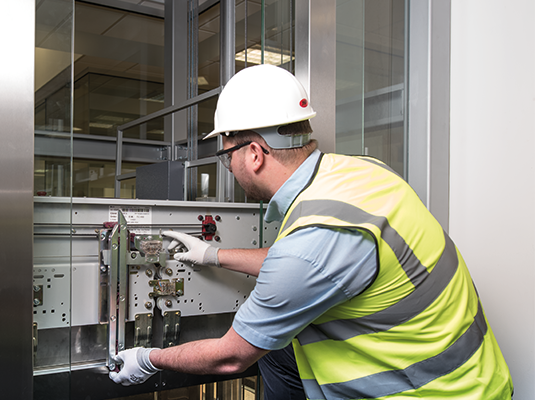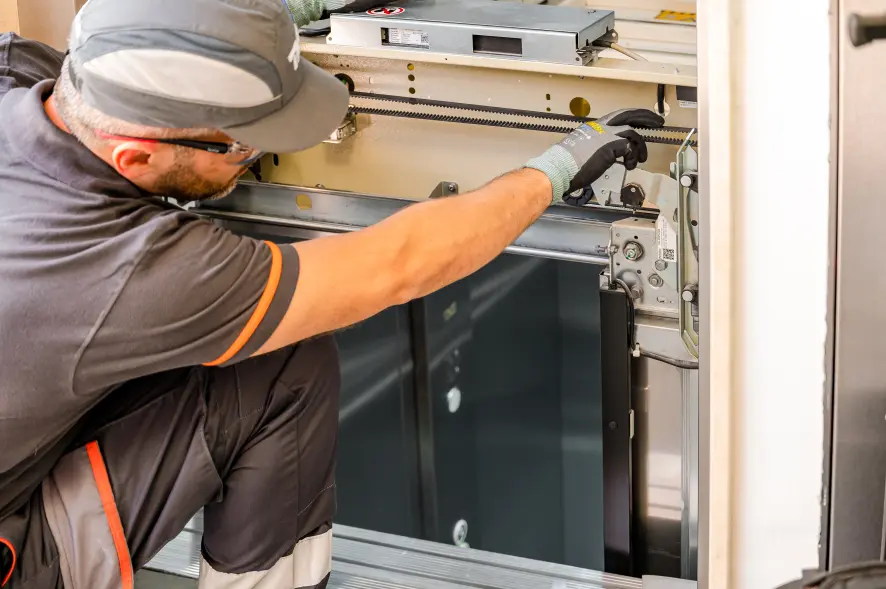Vital Guide to Recognizing Handicapped Platform Lifts and Their Functionality
Understanding the complexities of disabled system raises exceeds plain understanding; it needs a thorough grasp of their functionality and style. From the various types readily available to the vital parts that make them functional, each facet adds to the smooth operation of these crucial accessibility tools. The rigid safety laws and upkeep factors to consider associated with system lifts are vital in ensuring their integrity and durability. By discovering these facets in detail, one can gain a profound understanding of exactly how these lifts not only improve accessibility however likewise prioritize individual safety and security and convenience.
Kinds of Disabled System Lifts
There are a number of types of disabled system lifts designed to give accessibility for people with movement challenges. Upright system lifts are a preferred option as they relocate directly up and down, making them perfect for shorter distances and where area is restricted. These lifts are usually mounted in homes, colleges, and commercial buildings to aid wheelchair customers in browsing various levels. Inclined system lifts, on the other hand, appropriate for areas where an upright lift may not be possible as a result of building restrictions. These lifts comply with the slope of stairs, giving a smooth and secure trip for individuals with wheelchair problems.
One more kind of handicapped system lift is the portable lift, which uses adaptability and benefit. Each kind of disabled system lift offers a distinct objective in enhancing availability and boosting the top quality of life for individuals with flexibility difficulties.
Secret Components and Mechanisms
Disabled platform lifts, such as vertical and inclined lifts, rely upon specific key elements and devices to ensure smooth and risk-free transport for individuals with flexibility difficulties. One vital element of these lifts is the platform itself, which functions as the foundation for moving individuals - disabled platform lift. The platform is created to be durable, roomy enough to accommodate mobility devices or wheelchair gadgets, and furnished with security attributes such as guardrails and non-slip surfaces to avoid mishaps throughout transit

Additionally, security sensing units and emergency situation quit buttons are incorporated into impaired system raises to boost individual security and avoid accidents. These elements interact to produce a dependable and reliable transport service for individuals with flexibility impairments.
Setup and Maintenance Considerations

Routine upkeep is equally crucial to keep disabled system lifts running smoothly. By prioritizing correct installment and thorough upkeep methods, the longevity and performance of handicapped platform lifts can be taken full advantage of, benefiting both users and facility supervisors.
Safety And Security Features and Rules
Guaranteeing compliance with safety and security guidelines is critical when examining the effectiveness of safety and security attributes in impaired system lifts. Security features typically discovered in disabled system lifts consist of emergency situation stop buttons, safety obstacles, interlocks, and under-platform sensors. Interlocks make sure that the lift doors are safely shut prior to the lift operates, improving customer security.
Advantages of Using System Lifts
Conformity with safety and security guidelines and the application of crucial safety and security attributes in disabled platform lifts add to the total benefits of utilizing these lifts for people with impairments. Beyond safety and security, system lifts use a variety of benefits that improve availability and ease. One primary benefit is the boosted independence they supply to individuals with flexibility obstacles. By offering a reliable methods of upright transport, view website system lifts equip individuals to gain access to different degrees of a structure without assistance, advertising a sense of freedom and freedom. In addition, system lifts are flexible and can be set up in various setups, including homes, institutions, and commercial buildings, making them a practical remedy for a wide variety of environments. These lifts additionally promote inclusivity by making sure that people with impairments can browse rooms together with their able-bodied peers. Generally, the convenience, self-reliance, and inclusivity facilitated by system lifts considerably boost the lifestyle for people with handicaps, making them an invaluable access option.

Verdict
To conclude, handicapped platform raises can be found in numerous types with vital elements and devices that enable for risk-free and reliable operation. Installment and upkeep considerations are crucial for ensuring proper functionality. Security features and regulations need to be abided by whatsoever times to avoid accidents - lift servicing near me. The benefits of using system lifts include increased access and self-reliance for individuals with specials needs.